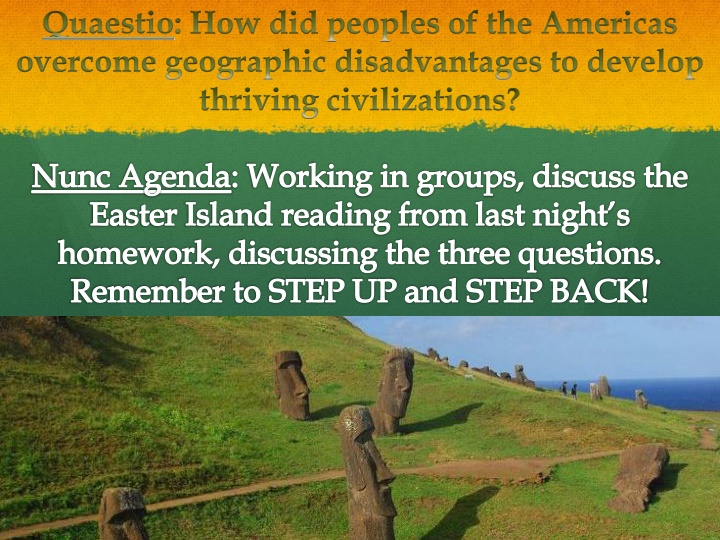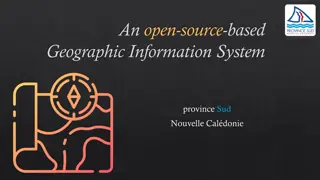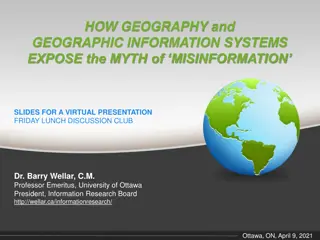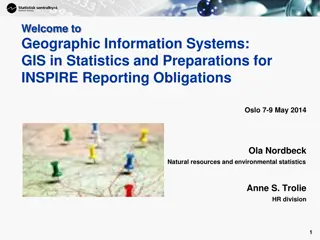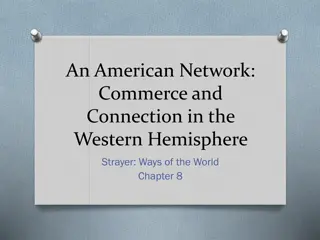Overcoming Geographic Challenges in Americas
Peoples of the Americas developed thriving civilizations by migrating via the Bering Land Bridge and watercraft, overcoming geographic barriers through innovative pathways. DNA evidence suggests origins in Siberia, challenging traditional theories.
Download Presentation

Please find below an Image/Link to download the presentation.
The content on the website is provided AS IS for your information and personal use only. It may not be sold, licensed, or shared on other websites without obtaining consent from the author.If you encounter any issues during the download, it is possible that the publisher has removed the file from their server.
You are allowed to download the files provided on this website for personal or commercial use, subject to the condition that they are used lawfully. All files are the property of their respective owners.
The content on the website is provided AS IS for your information and personal use only. It may not be sold, licensed, or shared on other websites without obtaining consent from the author.
E N D
Presentation Transcript
Quaestio: How did peoples of the Americas overcome geographic disadvantages to develop thriving civilizations? Nunc Agenda: Working in groups, discuss the Easter Island reading from last night s homework, discussing the three questions. Remember to STEP UP and STEP BACK!
Land Bridge Theory Summary More traditional theory of early migration During the last Ice Age (50,000-10,000 years ago), sea levels were 200 ft lower than today, which meant the land between Russia and Alaska was not covered with water like it is today. This land is called Beringia or the Bering Land Bridge. Around 30,000 years ago, people from Northeast Asia migrated to Beringia and settled there, hunting large game animals such as mammoths. Giant glaciers blocked them from moving South into the Americas.
Land Bridge Theory Summary 13,000 years ago- Ice-free pathway opened in Canadian glaciers providing a path from Alaska to the Americas Nomadic hunters (called Clovis Culture) followed big game along the Rocky Mountains to the North American Great Plains Continued South to populate North and South America by 11,000 years ago
Land Bridge Theory Evidence Strong DNA evidence shows that the majority of Native American DNA originated in Siberia Genetic tests on modern-day Native Americans indicate that their ancestors came from a single population that probably lived in Beringia Many large animal species suddenly went extinct around 11000 years ago (believed to be from hunting) Problem: 1000 years is a very short amount of time to populate all of the Americas by moving on land Problem: New evidence challenges this theory
Watercraft Migration Theories Summary People reached America through water travel following the coastlines from Northeast Asia (or even Southeast Asia/Polynesia) along Beringia to the Americas Water travel would be much faster than land travel and provide food sources (seafood)
Watercraft Migration Theories Evidence Evidence found that early Americans ate seafood (turtles and shellfish) which suggests coastal living Boat building technology had long existed in Japan and Southeast Asia during the period of migration Faster travel by water could explain human habitation in South America 1000 years before the Clovis culture Polynesian DNA was found in ancient skeletons in Brazil Skeleton found in Washington shows ancient Japanese features Bering Land bridge may have flooded 1000 years earlier than once believed
Watercraft Migration Theories Problems Atlantic Coastal Model Projectile points are not similar enough to be proof Solutrean culture in Europe ended at least 3500 years before Clovis culture in North America Haplogroup X only represents 3% of Native American DNA and actually is present in Siberia today in small Problem with ALL Coastal Migration Theories Prehistoric coastlines are now 200 ft underwater, so it is almost impossible to find evidence
Different Continents Different Histories
Civilizations of the Andes Andes Mountains run along Western South America Andean peoples adapted to living at high altitudes of the Andes mountains Drink tea of coca leaves to fight altitude sickness Cultivated the potato Domesticated the llama
Nazca Lines: What do these lines depict and on what do you think they are drawn?
Nunc Agenda: What do these lines depict and on what do you think they are drawn?
Nunc Agenda: What do these lines depict and on what do you think they are drawn?
Nunc Agenda: What do these lines depict and on what do you think they are drawn?
Civilizations of the Andes Nazca: 200 BCE - 600 CE in the coastal desert region between the ocean and the Andes mountains Known for the Nazca Lines, giant geoglyphs viewable only from the sky, which may have pointed to water sources for irrigation
Civilizations of the Andes Moche: 100 CE - 700 CE in the coastal desert region North of the Nazca where they built enormous brick temples Built road networks and irrigation systems that were later adopted by the Inca Famous for their unique ceramic drinking jars, which depict animals, expressive human faces, and sexual acts
OLMEC MAYA TEOTIHUACAN
